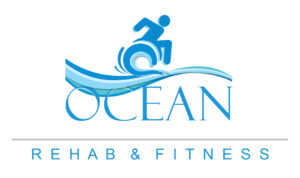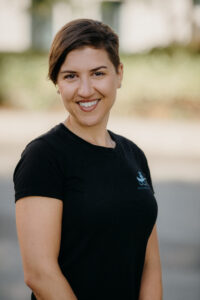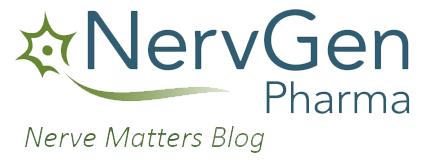By Codi Darnell
May 31, 2022
 Why do we exercise? It’s a question with multiple answers, most of which are rooted in the knowledge that exercise improves health. From blood pressure and bone strength to brain and cardiac health, being physically active is undeniably good for you. But good for you doesn’t mean easy. Both starting and maintaining a regular fitness routine is a difficult task for anyone, however, having a disability often makes the process even more complicated.
Why do we exercise? It’s a question with multiple answers, most of which are rooted in the knowledge that exercise improves health. From blood pressure and bone strength to brain and cardiac health, being physically active is undeniably good for you. But good for you doesn’t mean easy. Both starting and maintaining a regular fitness routine is a difficult task for anyone, however, having a disability often makes the process even more complicated.
While the internet is brimming with programs, equipment, and advice for getting active, very little of it is applicable for someone living with a disability. Adaptions often need to be made and finding someone who can confidently make those changes with your disability in mind can be a challenge. But since it is equally important for someone with a disability to stay active as it is for someone without, we reached out to Megan Williamson at Ocean Rehab and Fitness to help put a spotlight on adaptive fitness and how it could work for you.
Based in Vancouver, Canada, Ocean Rehab and Fitness offers individualized in-person and online adaptive fitness programs. When creating a program, Megan Williamson considers the individual needs of each client, and her first-hand experience and knowledge of many neuromuscular conditions means that she understands the nuances of many disabilities. She works with people from all over the world helping them reach their fitness potential and we are so happy she agreed to an interview.
After an injury or diagnosis that affects mobility, there is sometimes a fear about overworking the body. Why is it important to keep the body active despite any physical limitations someone may have?
I’m glad you asked this as this is a very rational fear. I tend to see this with individuals who have discomfort or pain linked to their disability or condition. What we need to recognize, however, is that anything we don’t use in the body we lose. This includes movement! An example is reaching up high for a cup in the cupboard – if we never lift our arms above our heads, this movement will become difficult to perform, or eventually even impossible. Moving our joints and muscles every day can not only help with discomfort or pain, but it can make other daily tasks more manageable.
What are the benefits of having a personalized fitness routine, one designed with a client’s disability in mind?

When we follow cookie cutter programs (in other words, not tailored for you specifically) we may not be targeting the areas of our body that needs the most attention. Not only can this slow down progress, but it can even lead to injury or strain.
Typically, the first step in a personalized fitness routine is the initial assessment. This important step allows the coach and client to see where the weak links are and where attention needs to be. Without this it is like taking a shot in the dark; without assessing we are only guessing!
Your approach is unique in that you design programs from the dual perspective of rehabilitation and fitness. Often when we think of starting an exercise routine, we think of muscle gains and cardio, but there is so much more to explore in terms of fitness. What are some of the other goals your clients work towards?
Oddly enough, strength is just an added bonus as to what our clients achieve when they work with our coaches or follow our personalized fitness programs. Most of our clients’ goals stem from day-to-day activities, like improving their transfers from their wheelchair to their bed or getting up off the floor. Some clients want to be able to wheel in the 10K, where others want to have better posture. Essentially, all these feats require a level of focus towards strengthening the body’s weakest links. The coolest thing to see as a coach is when our clients notice these changes in other areas of their life that they didn’t even consider!
You offer both in-person and online options for training. How do you assess and train a client in the online format?
The first thing we do is ask for a video of the client doing some movement. If they want to improve their walking gait, we will ask to see that. If they use a wheelchair, we ask for a video of them wheeling. During the first live virtual meeting, we will ask the client to perform movements that test joint range of motion. If the client is working with a specific injury or ailment, we will focus on that. Posture checks are also done by examining their wheelchair or scooter set up.
 How much equipment is required to do an online program? Can someone work with you if they have minimal equipment at their disposal?
How much equipment is required to do an online program? Can someone work with you if they have minimal equipment at their disposal?
The best piece of equipment we can use is our bodies! Whether your goal is to improve your cardiovascular health or strengthen your muscles, there are many ways to work with our bodies moving through space. For those of us that do want to use equipment but maybe don’t have a lot at home, our coaches like to use household objects. Things like canes or broomsticks, soup cans or water bottles, and pillows are all great options for full body workouts. Our goal as adaptive coaches is to try and offer as many equipment ideas as possible with the lowest associated cost to keep that from being a barrier to exercise.
What would you say to someone who says that an adapted fitness routine could never provide a “good workout”? Can someone with physical disabilities break a sweat in the gym?
I would say that exercise is relative. The workout that a 35-year-old newly injured paraplegic woman would do is going to look quite different from the workout of a 35-year-old paraplegic woman who rows for Team Canada. Both of these would be considered great workouts for the individual that they are programmed for, but maybe not suitable for the other. Whether you are working with a disability or not, no individual is going to be working with the same considerations or limitations as another. This is why working with a coach who can properly assess you and get you on the best program for you will give you the biggest bang for your buck and keep you the safest while hitting your fitness goals.
